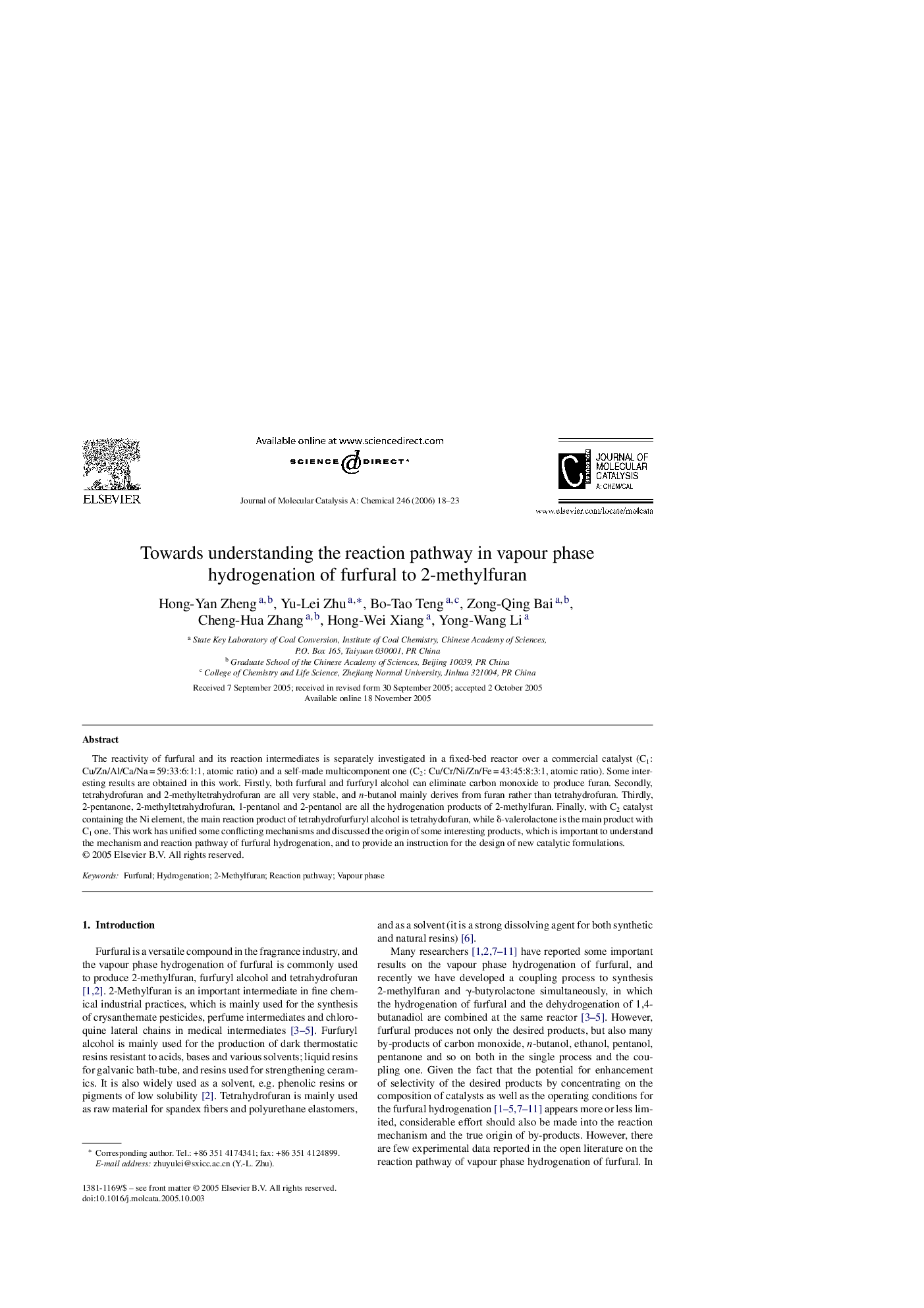| Article ID | Journal | Published Year | Pages | File Type |
|---|---|---|---|---|
| 69042 | Journal of Molecular Catalysis A: Chemical | 2006 | 6 Pages |
The reactivity of furfural and its reaction intermediates is separately investigated in a fixed-bed reactor over a commercial catalyst (C1: Cu/Zn/Al/Ca/Na = 59:33:6:1:1, atomic ratio) and a self-made multicomponent one (C2: Cu/Cr/Ni/Zn/Fe = 43:45:8:3:1, atomic ratio). Some interesting results are obtained in this work. Firstly, both furfural and furfuryl alcohol can eliminate carbon monoxide to produce furan. Secondly, tetrahydrofuran and 2-methyltetrahydrofuran are all very stable, and n-butanol mainly derives from furan rather than tetrahydrofuran. Thirdly, 2-pentanone, 2-methyltetrahydrofuran, 1-pentanol and 2-pentanol are all the hydrogenation products of 2-methylfuran. Finally, with C2 catalyst containing the Ni element, the main reaction product of tetrahydrofurfuryl alcohol is tetrahydofuran, while δ-valerolactone is the main product with C1 one. This work has unified some conflicting mechanisms and discussed the origin of some interesting products, which is important to understand the mechanism and reaction pathway of furfural hydrogenation, and to provide an instruction for the design of new catalytic formulations.
Graphical abstractBased on the results of this work and other literature, a new reaction pathway for furfural hydrogenation is proposed. This work has unified some conflicting mechanisms and discussed the origin of some interesting products, which is important to understand the mechanism and reaction pathway of furfural hydrogenation, and to provide an instruction for the design of new catalytic formulations. Figure optionsDownload full-size imageDownload as PowerPoint slide
